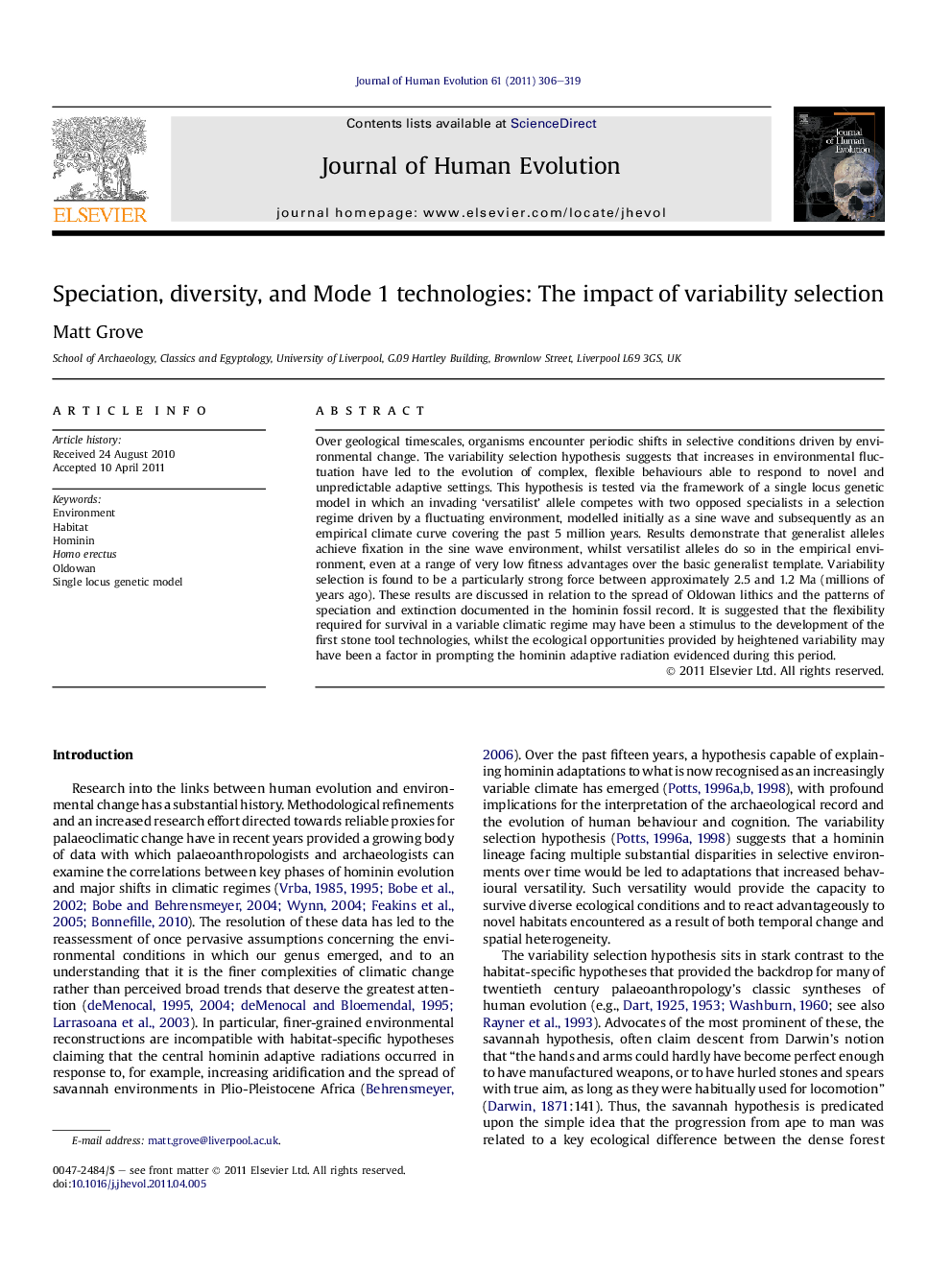| کد مقاله | کد نشریه | سال انتشار | مقاله انگلیسی | نسخه تمام متن |
|---|---|---|---|---|
| 4556509 | 1329484 | 2011 | 14 صفحه PDF | دانلود رایگان |

Over geological timescales, organisms encounter periodic shifts in selective conditions driven by environmental change. The variability selection hypothesis suggests that increases in environmental fluctuation have led to the evolution of complex, flexible behaviours able to respond to novel and unpredictable adaptive settings. This hypothesis is tested via the framework of a single locus genetic model in which an invading ‘versatilist’ allele competes with two opposed specialists in a selection regime driven by a fluctuating environment, modelled initially as a sine wave and subsequently as an empirical climate curve covering the past 5 million years. Results demonstrate that generalist alleles achieve fixation in the sine wave environment, whilst versatilist alleles do so in the empirical environment, even at a range of very low fitness advantages over the basic generalist template. Variability selection is found to be a particularly strong force between approximately 2.5 and 1.2 Ma (millions of years ago). These results are discussed in relation to the spread of Oldowan lithics and the patterns of speciation and extinction documented in the hominin fossil record. It is suggested that the flexibility required for survival in a variable climatic regime may have been a stimulus to the development of the first stone tool technologies, whilst the ecological opportunities provided by heightened variability may have been a factor in prompting the hominin adaptive radiation evidenced during this period.
Journal: Journal of Human Evolution - Volume 61, Issue 3, September 2011, Pages 306–319